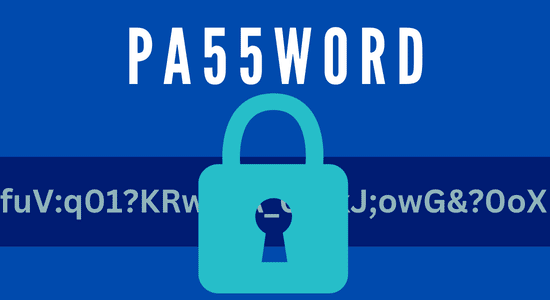H-O-T-T-O-G-O.
You can take me hot to go!

The Wild World of Online Security
Everything online gets attacked eventually. Hackers love snooping, cracking passwords, and making life miserable for website owners. Standard security measures feel like locking your door but leaving the window wide open. Time to shake things up with ideas that sound ridiculous but might just work.
Online security needs a fresh perspective. Traditional approaches focus too much on closing loopholes while attackers find new ones. A different strategy involves trickery, unpredictability, and psychological warfare. The more chaotic security measures are, the harder they become to bypass.
This list isn’t about conventional advice. Firewalls and two-factor authentication are great, but they aren’t enough. Out-of-the-box thinking makes all the difference. The best way to stop an attack is to make the whole process an unbearable nightmare for anyone trying.
1. Fake Error Pages That Lead to Nowhere
People hate error pages, so why not make them even worse? A 404 page that redirects hackers into an endless loop of fake login screens, useless captchas, and puzzles that don’t have answers could keep them busy for hours. Legitimate users get a secret escape route to the real login page. The longer an attacker wastes time, the less time they have to actually break in.
Every attacker expects a dead-end at some point. Feeding them a never-ending maze instead of a real error page frustrates their progress. An infinite redirect loop, combined with subtle changes to the page that hint at a solution, would keep them chasing their own tails. If done right, they might even convince themselves that solving the puzzle unlocks access.
Meanwhile, legitimate users wouldn’t even notice. They’d have a shortcut—maybe a secret keyboard combination or a specific browser agent—to reach the real destination. Security by misdirection works just as well as security by brute force.

2. Randomly Changing Passwords for No Reason
Nobody likes changing passwords, but attackers love predictable patterns. What if your website decided to swap passwords on its own schedule? Every 24 hours, all passwords get replaced by new ones that are emailed or texted to users. Hackers trying to crack credentials would always be a step behind, chasing ghosts instead of real accounts.
Some might say this is frustrating, but that’s the point. Users would need to check their phones or emails for a fresh password every time, but it would eliminate password reuse and stolen credentials. Security isn’t always about convenience—it’s about staying one step ahead.
Hackers typically rely on stolen credentials or brute force techniques. This method makes both of those strategies useless. By the time an attacker figures out one password, it’s already expired. They’d need real-time access to credentials, which becomes nearly impossible.
3. AI Chatbot That Pretends to be Tech Support… Forever
Most attackers pretend to be tech support at some point. What if your site fought back with its own AI that plays along with the hacker, offering completely useless advice? The longer they stay convinced they’re one step away from a breakthrough, the better. A little digital gaslighting goes a long way.
Attackers expect some friction when attempting to break into a system. They don’t expect to get trapped in an endless loop of bad advice. Imagine an AI that keeps suggesting fixes like "Try turning it off and on again" or "Your issue has been escalated to the nonexistent Tier 4 Support. Please wait 48 hours."
Legitimate users wouldn’t interact with this bot at all. A secret command or verification process would bypass it entirely. The AI would only engage with suspicious activity, keeping potential threats tangled in an endless web of nonsense.
4. A Login Page That Changes Every Time You Visit
Same-looking login pages make phishing easier. Instead, every visit loads a different login interface, with buttons shuffled, backgrounds changed, and fonts swapped. Hackers trying to mimic the real page won’t keep up, since their stolen credentials would end up on a fake version of the fake version of the real page. That’s a lot of layers of confusion.
Phishing relies on users becoming familiar with their login page. If the page keeps changing, attackers lose their advantage. Every time a hacker tries to replicate it, they’ll end up making mistakes, leading to a useless phishing attempt.
A constantly shifting login page can be tied to a legitimate user’s device. If they recognize a pattern, they know it’s safe. If they don’t, they’ll immediately spot something is off. Security through unpredictability keeps users safe without them having to think about it too much.
5. Decoy Admin Accounts That Trigger Fake Alerts
Most attacks go straight for admin accounts. Instead of hiding them, why not put a few obvious ones out there? These fake accounts could alert the real admin when someone tries logging in, while leading the attacker into a controlled sandbox. Watching a hacker stumble through fake data like a rat in a maze would be satisfying.
Hackers usually start by targeting high-privilege accounts. If they see "admin123" or "superuser," they’ll go for them immediately. Instead of securing these, turn them into bait. Once an attacker logs in, they get access to a fake admin panel loaded with bogus data and fake permissions.
Meanwhile, the system monitors their every move. Real administrators get a live feed of the attack in progress, along with logs showing what the attacker is trying to do. When they finally realize they’ve been duped, it’ll be too late.

6. Passwords That Expire in 60 Seconds
Standard password policies aren’t cutting it anymore. Instead, every login requires a password that self-destructs after a single use. One-time passwords exist, but this idea cranks it up—every login needs a fresh password, and any attempt to reuse an old one sends a silent alarm to security. Hackers would have to crack a password before it even exists.
This method eliminates the need for traditional password storage. Users receive a new, unique password every time they log in. Attackers won’t be able to steal anything since passwords become invalid almost instantly.
For an extra layer of chaos, passwords could be delivered through multiple channels. Some could arrive via email, others through text, and maybe even an automated phone call. Hackers would have no idea where to look next, keeping them frustrated and ineffective.
7. Fake Database Entries That Change Every Hour
Attackers love stealing data. What if half the data was completely fake and constantly shifting? If someone gets into the database, they’d be met with thousands of fake records, randomized every hour. Sorting out what’s real from what’s nonsense would be like untangling spaghetti with a blindfold.
A hacker’s worst nightmare is unreliable information. Every time they try to make sense of the data, it changes, making their efforts useless. The trick is to mix just enough real data with fake data so that nothing appears obviously artificial.
For legitimate users, verification codes or secret keywords could mark actual data. Meanwhile, the attacker would be left questioning their sanity, never knowing what’s real and what’s bait. The more they steal, the less valuable their loot becomes.
8. Make Hackers Solve a Useless Puzzle Before Doing Anything
Normal users get a smooth experience. Hackers, however, have to solve an absurdly difficult puzzle before they can do anything. A completely nonsense math problem, a riddle with no answer, or a captcha that demands an essay response. Attackers waste time while real users move along, blissfully unaware of the chaos behind the scenes.
Hackers rely on automation to test weaknesses quickly. Throwing in a problem they can’t script around forces them to slow down. Imagine a captcha that asks "What is the meaning of life?" and requires an answer longer than 500 words.
The more frustrating the process, the less likely attackers will bother. They’re not in this for philosophy lessons. Meanwhile, actual users skip past the nonsense, safe from intrusion.
9. Deploy a "Reverse Honeypot" That Acts Like It’s Hackable
Hackers love easy targets. A site that looks like a security disaster might attract them, but once inside, they find themselves locked into a loop of fake vulnerabilities. Every exploit leads to a dead end, every "leaked" credential redirects back to the login page, and every stolen credit card number belongs to a test account. Frustration sets in fast.
Making a website appear vulnerable is psychological warfare. Attackers think they’ve hit the jackpot, but everything they touch is a trap. They end up spending hours analyzing fake weak points instead of looking for real ones.
Meanwhile, real users never encounter any of these "exploits." The entire fake system only exists for intruders, wasting their time and forcing them to abandon the attack out of sheer exhaustion.
10. Auto-Banning Any IP That Tries Too Hard
Most security measures give attackers multiple chances. Why? One failed login attempt could be human error, but ten in a row means someone’s up to no good. Instant, aggressive banning makes brute force attempts useless, locking out any IP address that tries too many logins, scans, or suspicious actions. No warnings, no grace period, just instant exile.
Hackers depend on trial and error. The longer they can test different tactics, the more likely they’ll succeed. Cutting them off immediately removes that possibility.
Legitimate users might get accidentally locked out, but a backup login process—like email verification—fixes that. Meanwhile, attackers who thought they could brute force their way in find themselves permanently locked out with no way back.
Chaos is the Best Security
Standard security advice works for normal problems, but determined attackers demand something more unpredictable. Throwing absurd obstacles in their way forces them to waste time, second-guess their moves, and eventually give up. A little controlled chaos might be just what’s needed to keep websites safe.
